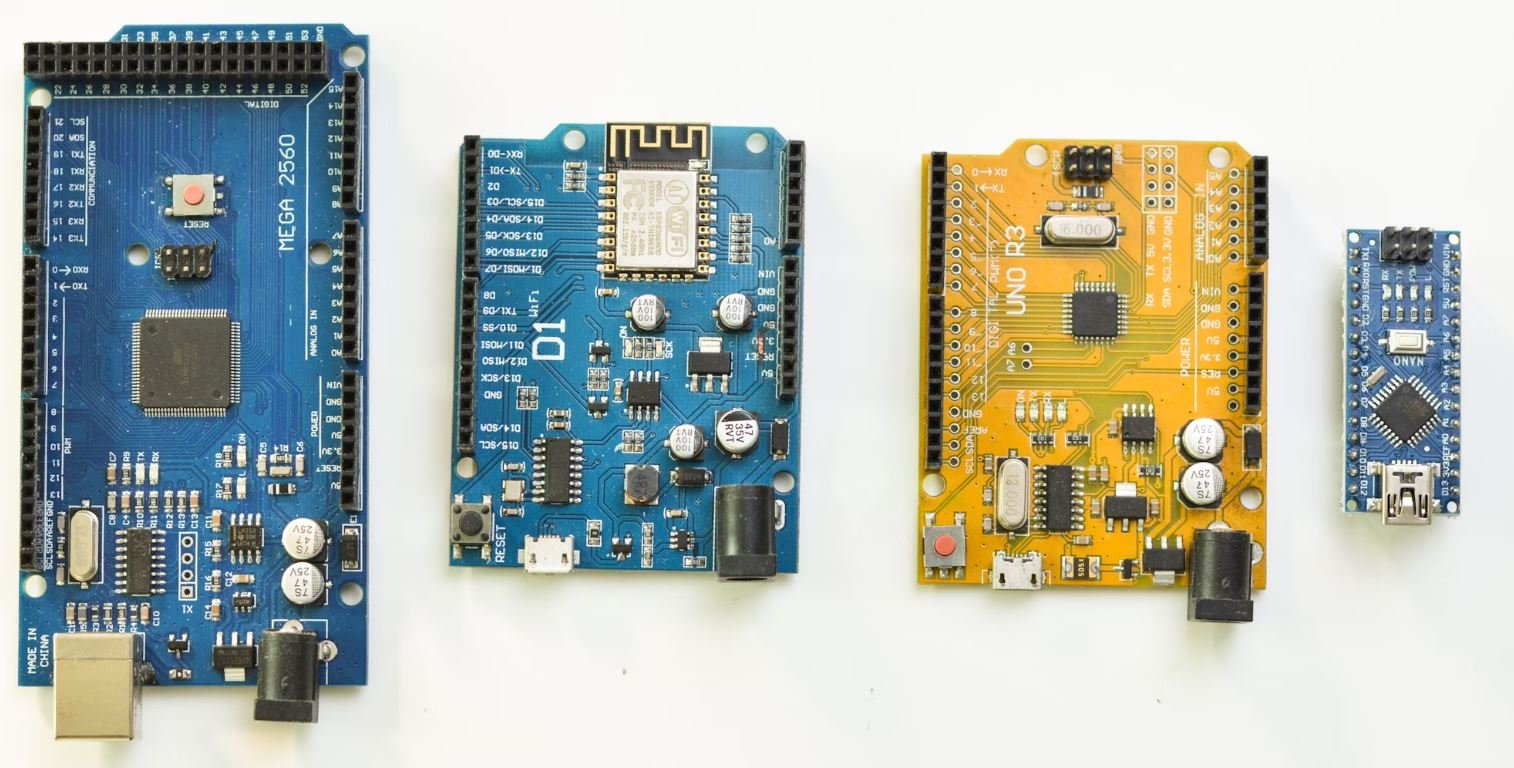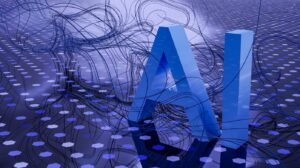AI Drawing Models
Artificial Intelligence (AI) has made significant advancements in various domains, and one of the fascinating applications is AI drawing models. These models leverage deep learning algorithms and vast datasets to generate stunning visual artwork, mimicking the artistic skills of humans. From generating realistic portraits to creating imaginative landscapes, AI drawing models have captured the attention of researchers, artists, and enthusiasts alike.
Key Takeaways
- AI drawing models utilize deep learning algorithms to generate visual artwork.
- They can replicate the artistic skills of humans and create realistic or imaginative drawings.
- Vast datasets are essential for training AI drawing models to produce high-quality output.
The Power of AI Drawing Models
AI drawing models leverage the power of deep learning techniques, such as Generative Adversarial Networks (GANs) and Variational Autoencoders (VAEs), to produce impressive visual outputs. These models learn from massive amounts of training data, allowing them to understand style, composition, and patterns, and generate original artwork based on acquired knowledge.* The combination of data-driven learning and the ability to generalize enables AI drawing models to create drawings that exhibit diverse styles and subject matters.
One interesting aspect of AI drawing models is their ability to collaborate with human artists. By using AI-generated sketches or elements as a starting point, human artists can enhance and refine the artwork, leading to unique creations that are a blend of human creativity and AI-generated inspiration.
Applications of AI Drawing Models
AI drawing models have found applications in various domains, including:
- Automated Design and Graphics: AI drawing models can aid in automating the design process for graphics, logos, and advertisements.
- Concept Art and Storyboarding: They can assist in generating concept art and storyboarding for films, animations, and video games.
- Art Education and Skill Development: AI drawing models offer a valuable resource for artists to learn new techniques, practice, and expand their artistic skills.
Moreover, AI drawing models have the potential to democratize art by providing accessible tools for individuals with limited artistic abilities to create visually appealing artwork.
Table: Comparison of Popular AI Drawing Models
| Model | Advantages | Limitations |
|---|---|---|
| DeepArt.io | Quick and user-friendly interface. Supports various styles and filters. | Limited control over output. Requires an internet connection. |
| DALL-E | Can generate unique and imaginative images based on textual prompts. | Limited public access. Currently in a research phase. |
How AI Drawing Models Learn
Training AI drawing models involves feeding them with vast amounts of labeled images or sketches. These datasets enable the models to learn from a variety of drawing styles, subjects, and techniques. Once trained, the models can generate new drawings based on the learned patterns and style.*
Interestingly, AI drawing models can also learn from human feedback. By incorporating information about the artistic preferences or adjustments provided by humans, the models can refine their output and tailor it to specific requirements.
Benefits and Concerns
AI drawing models come with numerous benefits and concerns:
- Benefits:
- They can accelerate the creative process and provide inspiration to artists.
- AI drawing models can democratize art by making it more accessible and inclusive.
- They offer a valuable tool for exploration and experimentation with different artistic styles.
- Concerns:
- AI drawing models raise questions related to copyright infringement and intellectual property.
- There is a worry that relying heavily on AI-generated art might diminish the value of human creativity.
- AI-generated artwork might lack the emotional depth and subjective interpretation of human art.
Table: Comparison of AI Drawing Model Tools
| Tool | Features |
|---|---|
| Google’s AutoDraw | Guesses user-drawn images and suggests corresponding icons. |
| DoodleGAN | Generates images based on textual prompts and doodles. |
| PaintsChainer | Colorizes black and white sketches using a neural network. |
AI Drawing Models: A Creative Partnership
AI drawing models have emerged as powerful creative tools that augment the capabilities of human artists. They open new horizons for artistic exploration, empower novices to engage in art creation, and enable professional artists to push the boundaries of their creativity.* In this dynamic collaboration between humans and machines, AI drawing models have become an integral part of the modern artistic landscape.
With ongoing advancements in AI and machine learning, we can expect further breakthroughs in AI drawing models, revolutionizing the way we perceive and create art. Whether it’s in automated design, concept art, or art education, these AI-driven tools are expanding possibilities and shaping the future of artistic expression.

Common Misconceptions
Misconception 1: AI Drawing Models can replace human artists entirely
- AI drawing models are powerful tools, but they lack human creativity and emotions.
- Human artists can provide unique perspectives and interpretations that AI models cannot replicate.
- AI models are best used as aids to enhance human creativity, rather than completely replacing them.
Misconception 2: AI Drawing Models can only produce realistic art
- AI drawing models are highly versatile and can produce various styles, from realistic to abstract.
- They can mimic famous artists’ styles or create entirely new ones.
- There are AI models specifically designed to produce abstract or surrealistic art.
Misconception 3: AI Drawing Models work perfectly and never make mistakes
- While AI models can produce impressive results, they still make errors and require refinement.
- They may struggle with complex or unfamiliar subjects, resulting in inaccurate drawings.
- AI models need continuous training and fine-tuning to improve accuracy and minimize mistakes.
Misconception 4: AI Drawing Models discourage artistic skills and practice
- On the contrary, using AI drawing models can serve as a learning tool and source of inspiration for artists.
- They can assist artists in exploring new techniques and styles.
- AI models can speed up the initial sketching process, allowing artists to focus more on refining and adding personal touches.
Misconception 5: AI Drawing Models are only used by professionals
- AI drawing models are becoming increasingly accessible and user-friendly.
- They can be used by anyone, regardless of their skill level or artistic background.
- Even beginners can benefit from using AI models to improve their drawing skills and expand their creativity.

AI Drawing Models
Artificial Intelligence (AI) has been making significant strides in various fields, and one area where it has gained considerable attention is in the realm of drawing and painting. AI drawing models have the ability to generate astonishingly realistic and artistic images, transforming the way we create and perceive art. This article presents 10 captivating examples that showcase the incredible capabilities of AI drawing models.
1. A Portrait of Emotion
Using AI drawing models, an algorithm created a stunning portrait that captures the emotions and expressions of the subject. The model analyzed various facial features and incorporated them seamlessly into the artwork, highlighting the depth of human emotions.
2. Nature’s Masterpiece
An AI drawing model generated a mesmerizing landscape painting that rivals the works of the greatest nature artists. The model effortlessly blended vibrant colors, intricate details, and realistic textures to bring to life the beauty of natural scenery.
3. Reimagined Classics
This AI drawing model reimagined famous classic artworks by renowned artists. With its remarkable ability to replicate artistic styles, the model accurately recreated iconic paintings, adding a fresh perspective with its own unique touch.
4. Surreal Dreamscapes
Through AI drawing models, dreams took tangible form as they conjured surreal landscapes. These mesmerizing artworks flawlessly merged reality and fantasy, transporting the viewer to an otherworldly realm where imagination knows no bounds.
5. Animal Portrayals
AI drawing models showcased their versatility by creating lifelike sketches of various animals. These intricate illustrations captured the essence and soul of each species, illustrating the power of AI in accurately representing the diversity of the animal kingdom.
6. Fine Art Fusion
An AI drawing model integrated multiple art styles into a single composition. The resulting artwork became a harmonious amalgamation of different aesthetics, highlighting the model’s ability to blend and adapt various techniques seamlessly.
7. Architectural Marvels
Using AI drawing models, architectural wonders were brought to life with precision and grandeur. The intricate details and impeccable accuracy of these drawings showcased the potential of AI in assisting architects and engineers in their creative processes.
8. Fantastical Creatures
AI drawing models ventured into the realm of mythology and folklore, conjuring fantastical creatures with astounding accuracy. These ethereal beings sprang from the depths of imagination, demonstrating the model’s ability to create awe-inspiring and mythical figures.
9. Abstract Wonders
An AI drawing model transcended traditional artistic boundaries to create abstract masterpieces. These vibrant and dynamic compositions pushed the limits of creativity, captivating viewers with their intricate patterns, shapes, and colors.
10. Human-Machine Collaboration
A unique collaboration between artists and AI drawing models resulted in captivating creations that seamlessly blended human and machine creativity. These collaborative artworks showcased the potential of AI in enhancing artistic expression and fostering new forms of creativity.
In conclusion, AI drawing models have revolutionized the field of art by pushing the boundaries of creativity, realism, and imagination. These 10 examples merely scratch the surface of the incredible capabilities of AI in generating stunning and captivating artwork. As AI continues to advance, it holds endless possibilities for artists, architects, and creatives in exploring new realms of visual expression.
Frequently Asked Questions
AI Drawing Models
What are AI drawing models?
AI drawing models are machine learning algorithms that can generate drawings and images based on input or trained data. These models use deep learning techniques to analyze patterns, learn from examples, and create new drawings.
How do AI drawing models work?
AI drawing models work by training on large datasets of existing drawings and images. They learn to recognize patterns and generate new content based on the patterns they have identified. These models use techniques such as convolutional neural networks (CNNs) and generative adversarial networks (GANs) to achieve their results.
What can AI drawing models be used for?
AI drawing models can be used for various applications, including creating artwork, generating realistic images, designing virtual environments and characters, enhancing photos, and assisting in creative processes.
Do AI drawing models have limitations?
AI drawing models have certain limitations. They can sometimes generate unrealistic or nonsensical images, struggle with complex scenes or unusual perspectives, and have difficulties with fine-grained details. Additionally, they heavily rely on the quality and diversity of the training data they receive.
How are AI drawing models trained?
AI drawing models are trained by exposing them to large datasets of labeled drawings or images. The models learn to extract features from the data, identify patterns, and generate new content based on the learned patterns. Training typically involves training on powerful hardware with specialized processors like graphics processing units (GPUs) to accelerate computations.
Can AI drawing models be fine-tuned or customized?
Yes, AI drawing models can be fine-tuned or customized to some extent. By adjusting certain parameters, modifying the training process, or providing additional dataset, the performance and output of the models can be influenced to cater to specific requirements or artistic styles.
Are AI drawing models accessible to non-experts?
While AI drawing models were initially developed for experts in the field, efforts have been made to make them more accessible to non-experts. User-friendly interfaces and tools have been created to allow individuals with minimal technical knowledge to experiment and create with these models.
Can AI drawing models learn from user input?
Yes, AI drawing models can learn from user input. Some models support interactive drawing, where users can sketch or provide hints to guide the model’s output. This allows users to have more control and influence over the generated images.
Are there ethical concerns related to AI drawing models?
Yes, there are ethical concerns related to AI drawing models. These models can sometimes generate offensive or inappropriate content, infringe copyrights, or cause confusion regarding the authenticity of created images. Responsible development and usage of AI drawing models, including appropriate data selection and moderation, are necessary to mitigate such concerns.
What is the future of AI drawing models?
The future of AI drawing models holds great potential. As research and technology progress, these models are likely to become more powerful, capable of generating even more realistic and diverse drawings. They may also find applications in fields like gaming, virtual reality, and automated design processes.




